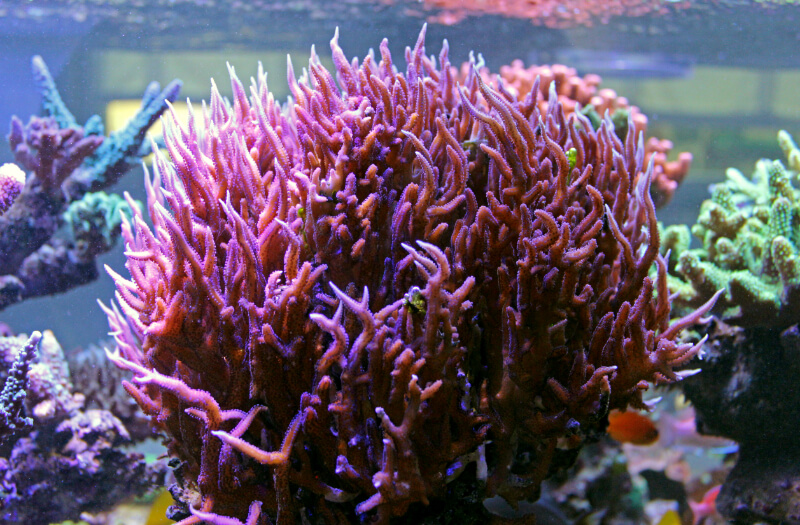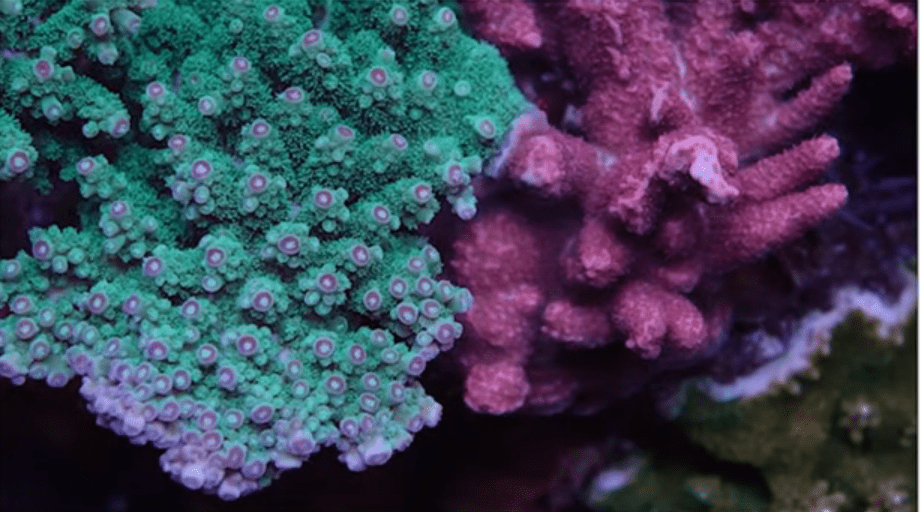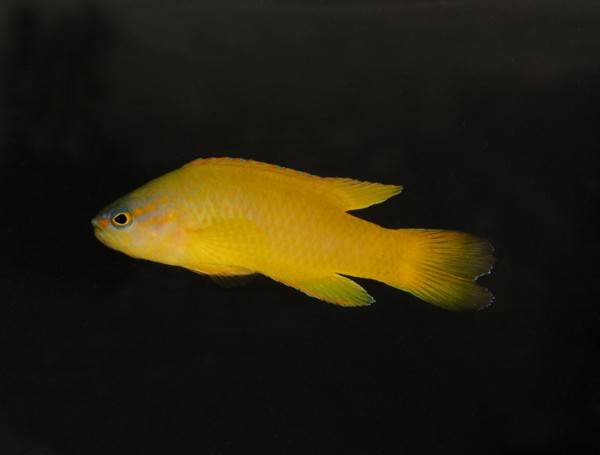If you’re passionate about creating a stunning and thriving reef aquarium, the Birdsnest coral is an excellent addition to your underwater oasis. Known for its intricate branching structure and vibrant colors, this captivating coral is a favorite among reef enthusiasts.
Whether you’re a seasoned reef keeper or a beginner looking to venture into coral keeping, this guide will provide you with the insights needed to create a thriving environment, so let’s begin!
Species Summary
The Birdsnest Coral is a small polyp stony (SPS) coral originally found in the Indo-Pacific region, usually in Madagascar, East Africa, the Red Sea, and the north and west coasts of Australia. They live in areas ranging from shallow spots to depths of 120 feet.
This SPS coral is part of the Pocilloporidae family. Its scientific name is Seriatopora hystrix, and its common names are Bird’s Nest coral, Brush coral, Needle coral, and Finger coral.
Appearance
The Birds Nest Coral’s tentacles resemble colorful, needle-like branches, and some species completely extend after dark.
Your coral’s designated area makes an impact on the thickness of its branches. Corals that live in areas with weak water flow have thin branches, while branches are thicker on corals that reside in more intense waters.
Species and Colors
There are seven species of the Birdnest Coral, and most of these species have a lot in common in terms of appearance.
– Animalia (Kingdom)
– Anthozoa (Class)
– Cnidaria (Phylum)
– Hexacorallia (Subclass)
– Pocilloporidae (Family)
– Scleractinia (Order)
– Seriatopora (Genus)
Author Note: The wide selection of species makes it easier to create your ideal aesthetic because you have your pick of the bunch. The colors vary per species and usually include purple, pink, green, orange, pale yellow, cream, and brown. In some cases, you may find corals in a combination of these colors.
Lifespan
The lifespan of the Bird’s Nest Coral depends on whether they are wild or non-wild species. There have been cases of some wild corals in the Pocilloporidae family living up to 5,000 years.
It is better to search for non-wild corals for your aquarium. Wild corals do not adjust well to captivity, and they may only live seven to eight years.
Average Size
The branches of the Birdsnest Coral can grow between 12 and 18 inches. These branches can be either blunt or look like needles and the greater the depth, the thinner the stalks.
Birdsnest Coral Care
The Birds Nest Coral requires moderate care, making it a great choice for both beginner and experienced hobbyists. For the best care make sure you follow the recommended guidelines below.
Tank Size
Plenty of room is recommended for the branches of your coral to grow and expand. Therefore, the size of the tank to host your Birdsnest coral should be at least 15 gallons.
Water Parameters
Part of providing proper care is ensuring the water parameters are as close to the recommended range as possible. The goal is to ensure your coral thrives by providing the necessary nutrients and a stable environment.
Tank Setup
The most successful way to ensure your Birdsnest Coral flourishes is to properly set up its tank. Your coral’s environment makes a difference in how much they grow and whether they survive.
- Water temperature: 74-83 degrees Fahrenheit (23-28 degrees Celsius)
- pH levels: 8.1-8.4
- Water hardness: 8-12 dKH
- Specific gravity: 1.025
- Calcium: 400-450 ppm
- Magnesium: 1200-1350
- KH levels: 8-12
- Strontium: 8-10
- Nitrates: 10ppm
- Nitrites: 10ppm
- Ammonia: 10ppmPhosphates: Near 0
Placement
The Birds Nest Coral prefers to grow on a slab of rock or substrate in the middle of the tank or closer to the surface. These corals grow upward and outward rather than downward, so you want to use just enough glue or epoxy to secure them to their base. Otherwise, the adhesive may show and disrupt your aesthetic.
You also need to place your coral in a spot away from other corals and fish in your aquarium. This way, you can protect your other corals while ensuring your Birdsnest Coral does not become stressed.
Author Note: Make sure to keep corals of the same species at least two inches apart to prevent their branches from becoming tangled during growth.
Lighting
It is important to place your Birds Nest Coral in a spot with moderate-to-high lighting. The right lighting imitates its natural habit and helps it feel comfortable enough to grow. Let’s also not forget that lighting is essential to corals for photosynthesis and nourishment.
Author Note: During their introduction to your aquarium, start with lighting at 50 percent intensity. Pay attention to your coral’s response and gradually adjust the lighting as needed.
Another way to provide the right lighting is to move your coral to different depths in your aquarium and monitor its response. It is possible their current spot is not providing the light they need to blossom.
Filtration / Water Flow
A moderate-to-high water flow is ideal for encouraging faster growth in your Birdsnest Coral. It is recommended to start with a moderate flow to find out how it affects your coral while preventing environmental shock. Then, you can adjust the filtration to a higher water flow as needed.
Acclimation
Start by ensuring you are adding your Bird’s Nest Corals to a mature reef tank because they are too sensitive for a new saltwater tank.
The key to proper acclimation is patience. Your coral needs time to adjust to captivity, so it is recommended to wait until your tank is at least six months old before adding them to your aquarium (18 months would be better).
Author Note: Failure to properly acclimate your coral can result in bleaching, stress, or even death. It is best to take it slow and ensure your coral is doing well in its new surroundings. Once your coral is in comfortable, stable water parameters, you can enjoy its growing branches and beautiful appearance.
Common Possible Diseases & Prevention
The Birdsnest Corals are more susceptible to stress and death from poor conditions than diseases. For instance, a coral that is uncomfortable or unused to its conditions may not open its polyps, and this can cause your coral to starve to death unless you immediately adjust its surroundings.
Other ways your coral could become stressed or bleached is with dirty water and sudden changes in the parameters. Fortunately, all of these issues can be easily prevented by allowing your coral to adapt to a mature tank and by providing clean and stable water parameters.
Food & Diet
Bird’s Nest Corals are able to receive most of their nutrients from a diet based on zooxanthellae, planktonic organisms, dissolved organic matter, and small food particles. You can provide enough organic matter by adding shrimp, fish, crabs, and snails to your aquarium. As for the fish, they should be well-fed and able to drop food particles down to the coral. Plus, your corals create a home for the very species that produce organic matter, so it is a win-win situation for the entire tank.
Author Note: You also need to target feed your corals at least once a week to ensure they are getting the nutrients and supplements they need, including magnesium, calcium, strontium, and trace elements. Start by purchasing a bottle of coral food to carefully shoot directly at your coral. There is nothing like watching your coral stretch out its polyps to catch their food.
Bird’s Nest Coral Tank Mates & Predators
The Birdsnest Coral can act aggressively toward corals outside its family. Rather than using toxins or stingers, they grow over corals that are placed within two inches of their space.
Other than providing enough room for growth, you can create a peaceful environment by looking into the best tank mates for these corals.
The Hapalocarcinus marsupialis crab is a great example of a safe tank mate because it influences the Birds Nest Coral. The female crab uses the branches as a cage, where she mates with the male crab and produces larvae.
Author Note: Part of choosing the right tank mates is knowing what species to avoid adding to your aquarium. Stay away from coral eating and chewing fish like butterfly fish, parrot fish and triggerfish like picasso and clown.

Fragging
Fragging is the best way to help your Birds Nest Coral reproduce, and it is easier to frag this coral than other coral species. It is natural to feel a little nervous when cutting the fragment for the first time which is why we created the 8-step guide below.
- The first step is to prepare your fragging tank because your coral is not going back into its original tank right away.
- Once your fragging tank is ready, choose the healthiest coral in your colony. This is known as the Mother Coral because it is going to reproduce your new coral.
- Next, place your Mother Coral on a rock outside of the tank, and mark off the fragment you are planning to remove. This is to avoid stressing fish and invertebrates.
- Using a razor blade, carefully cut the cap off the coral leaving the rest on the rock. Don’t worry about the white and brown ooze since this is a normal reaction.
- The next step is to gently wash the cut made on your coral fragment.
- Glue the fragment on its side to a surface such as a rock for ample water and airflow and wrap it with a plastic mesh. To hold it in place you can use a rubber band.
- Place the fragment in a separate tank as it heals and grows. You might see a head shaped like a disc coming out of the stalk.
- Keep an eye on the fragment and provide proper care, such as food and clean water. Feel free to remove the mesh once the frag is fully attached.
You can follow this guide to frag healthy corals when desired and you need more detailed information, check our comprehensive Coral Fragging Guide.
Wrapping Up
Bird’s Nest Coral is a captivating and rewarding addition to any reef aquarium. Remember to be patient since these corals may take time to adapt and grow, so avoid rushing or making sudden changes to their environment.
We hope you found this care guide helpful for your future aquarium endeavors, and if you are looking for additional information check our other care guides. Don’t forget to tag us on Facebook when sharing photos of your good looking corals.



